My primary research focus is galaxy dynamics: I am interested in using stellar motions and gravitational interactions to probe galaxy formation and evolution. The questions I am currently most excited about have to do with what we can infer about internal structures in galaxies like the Milky Way (e.g., substructure in the interstellar medium, spiral arms, dark matter subhalos) based on their cumulative dynamical influence on stellar orbits over the lifetime of the galaxy.
You can find brief descriptions of some of my latest projects below; for a more thorough list you can find me on ADS, arXiv, Google Scholar, or ORCID, or check out my CV (last updated on 09/30/2025).
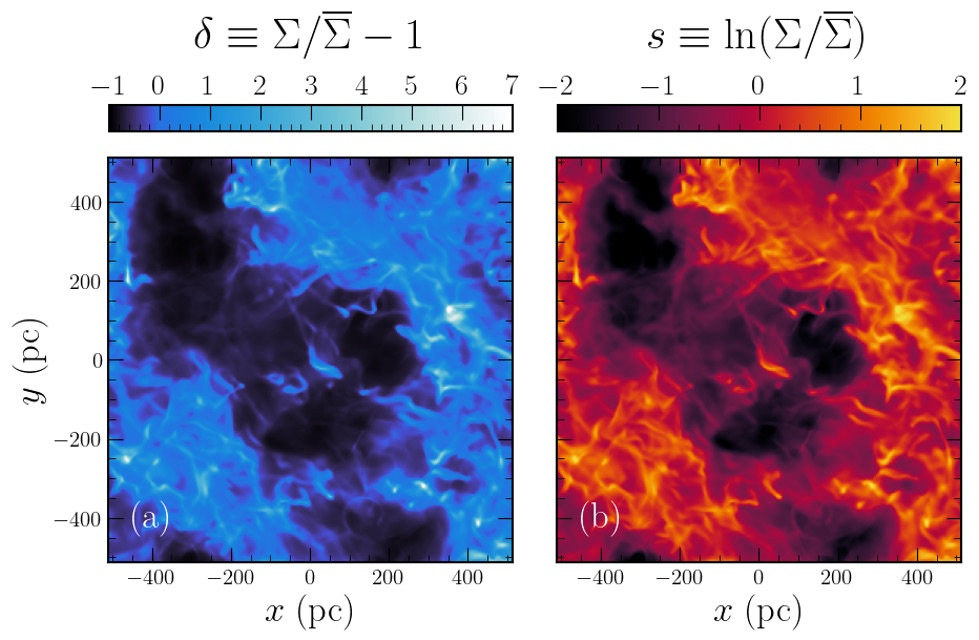
Characterizing ISM fluctuations
With Eve Ostriker, Chris Hamilton, and Scott Tremaine, I characterized the density and gravitational potential fluctuations in state-of-the-art TIGRESS-NCR simulations of the interstellar medium (ISM), which include detailed microphysics and resolve parsec to kiloparsec scales. We find that surface density fluctuations follow a log-normal pdf with a steep power law spatial power spectrum, indicating that most fluctuation power is contained at the largest scales, and that the lifetimes of structures at these large scales are set by feedback. Combining these surface density statistics with a fitted model for the vertical profile of the gas, we can link the surface density fluctuations to those in the gravitational potential, which have important consequences for e.g., the secular evolution of galactic disks. We also provide convenient parametrizations of our results for use in semi-analytic dynamical calculations and for comparison with observations.
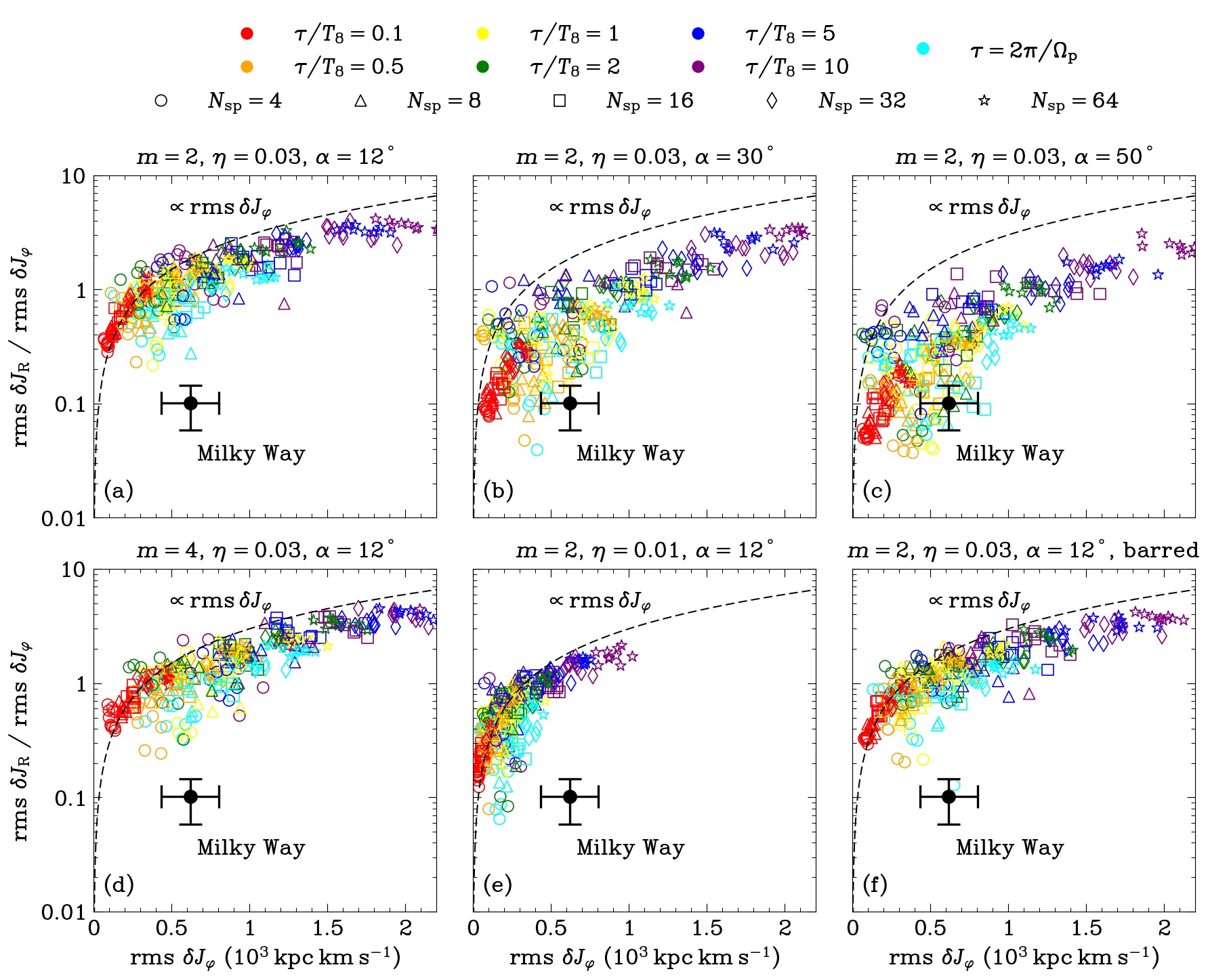
Why is the Galactic disk so cool?
The Galactic disk is "cool" — stars in the disk tend to have migrated (shuffled in guiding center radius) much more efficiently than they have been heated (evolved toward larger epicyclic amplitudes). In this paper, Chris Hamilton, Scott Tremaine and I used this fact to constrain the possible nature and/or history of spiral structure in the Galaxy, finding that most generic sets of spiral perturbations motivated by recent observations tended to heat stellar orbits far too much in order to produce the observed amount of migration. Thus, we concluded that it is likely that spirals must be fairly concentrated in amplitude about their corotation radii, and/or less tightly wound than suggested by the observations.
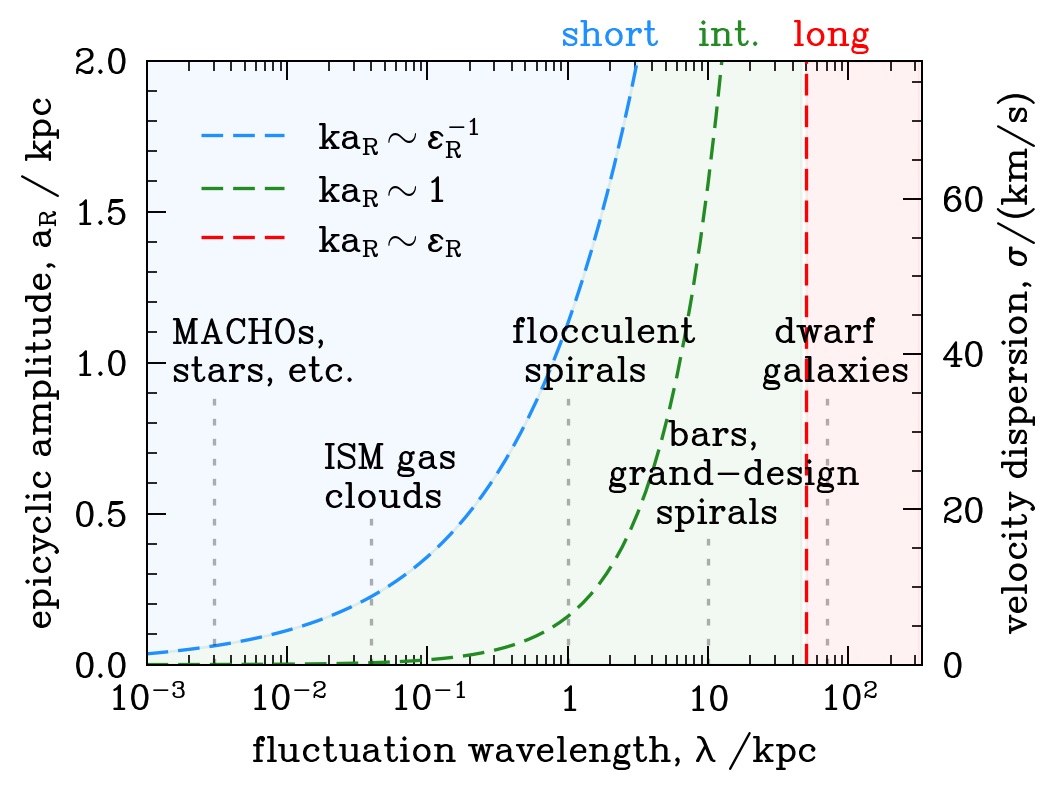
Galactokinetics
Inspired by "gyrokinetics" in plasma physics, Chris Hamilton, Scott Tremaine and I developed an approximate theory describing how potential fluctuations couple to stellar orbits in thin galactic disks. By classifying perturbations by their scale with respect to the typical guiding radii and epicyclic amplitude of stellar orbits, and treating different regimes with appropriate approximations, many important calculations that had to be evaluated with complicated numerics in the past become analytically tractable. In this first paper, we develop the approximations for the potential fluctuations in each regime, and in subsequent works, we will apply these results to build a unified linear theory of spiral structure as well as a theory for orbital transport (migration and heating) processes in disks.
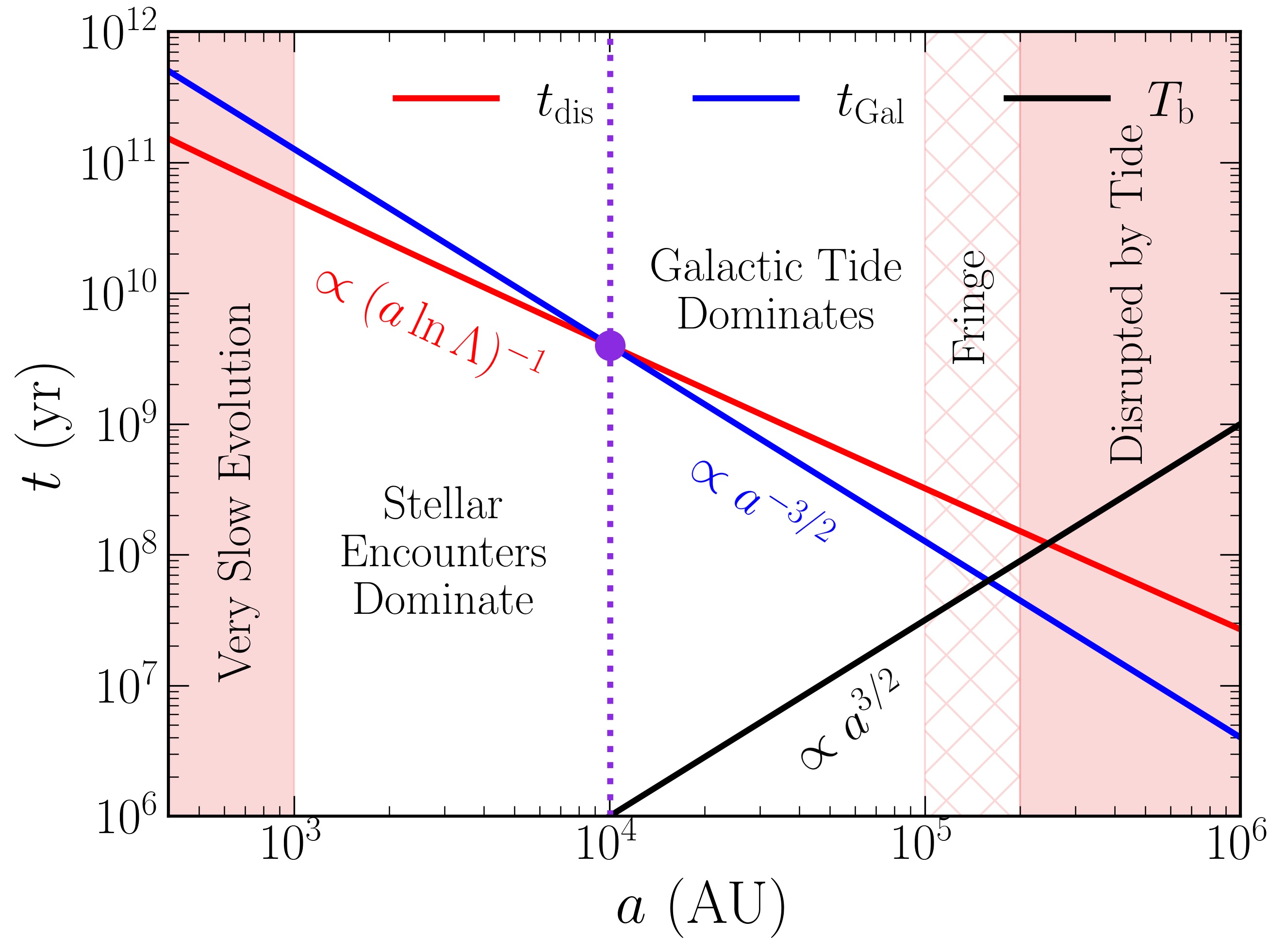
Wide binary eccentricity dynamics
In a pair of papers, Chris Hamilton and I studied the effects of (i) the Galactic tide and (ii) encounters with passing stars on the eccentricity distribution of wide stellar binary systems. The former effect is purely Hamiltonian, and we prove analytically that the resulting phase-mixing drives the eccentricity distribution toward thermal. We model the latter effect with a Fokker-Planck equation in semimajor axis - eccentricity space, and find that encounters also drive the distribution toward thermal. Thus, the observed "super-thermal" eccentricity distribution cannot arise dynamically from a thermal or "sub-thermal" initial distribution, and so must constrain the formation mechanism behind these binaries.
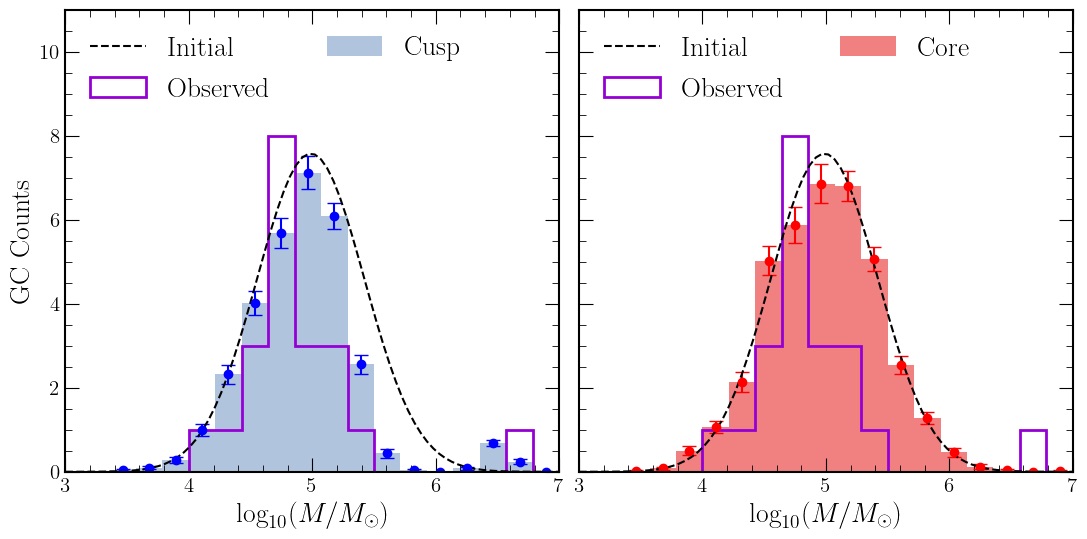
Detecting cuspy halos with GCs
With Shany Danieli and Jenny Greene, I investigated how cored vs. cuspy dark matter halos alter the structure of globular cluster (GC) systems in dwarf galaxies. Modeling the galaxy UGC 7369, we found that the mass function of its GC system is naturally and robustly explained by the presence of a cuspy halo, which (unlike a cored halo) induces the formation of a nuclear star cluster (NSC) as GCs inspiral and merge due to dynamical friction. I also co-mentored undergraduate student Veena Krishnaraj on an extension of this project studying NSC formation and relating the fraction of cuspy and nucleated dwarf galaxies.

Cosmic-ray driven Galactic winds
With Eliot Quataert, Yan-Fei Jiang, and Todd Thompson, I studied how incorporating realistic heating from cosmic rays (CRs) and radiative cooling alters the structure of CR-driven galactic winds. Performing a suite of idealized spherically symmetric wind simulations in Athena++, we found that the winds are approximately isothermal near the base where heating and cooling balance, but thermal instability sets in at intermediate radii, ultimately saturating with a sharp increase in temperature, so the winds are thermal-pressure-dominated at large radii. Most of the wind energy is lost in escaping the gravitational potential of the galaxy, so these winds are inefficient in providing preventive feedback in the CGM.






